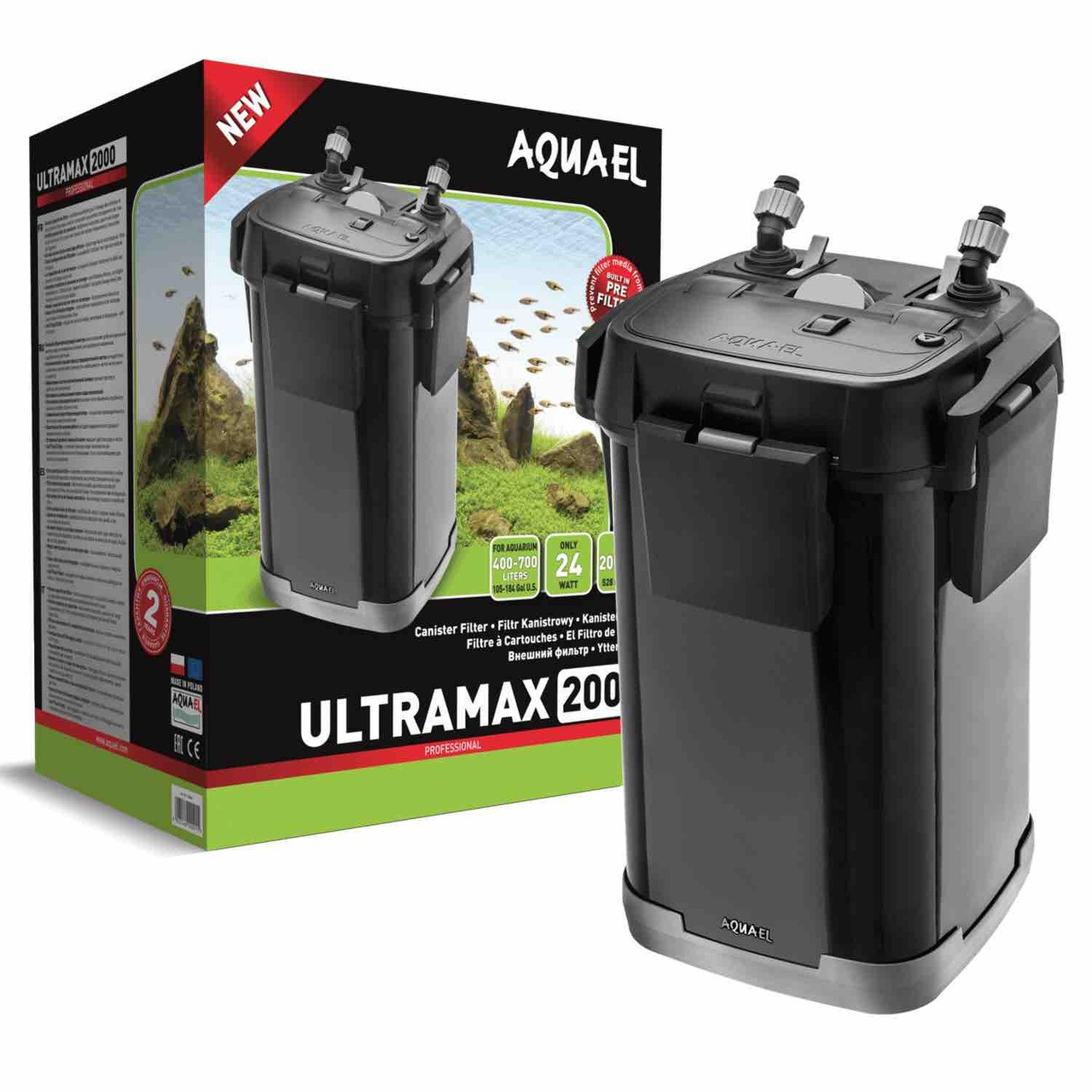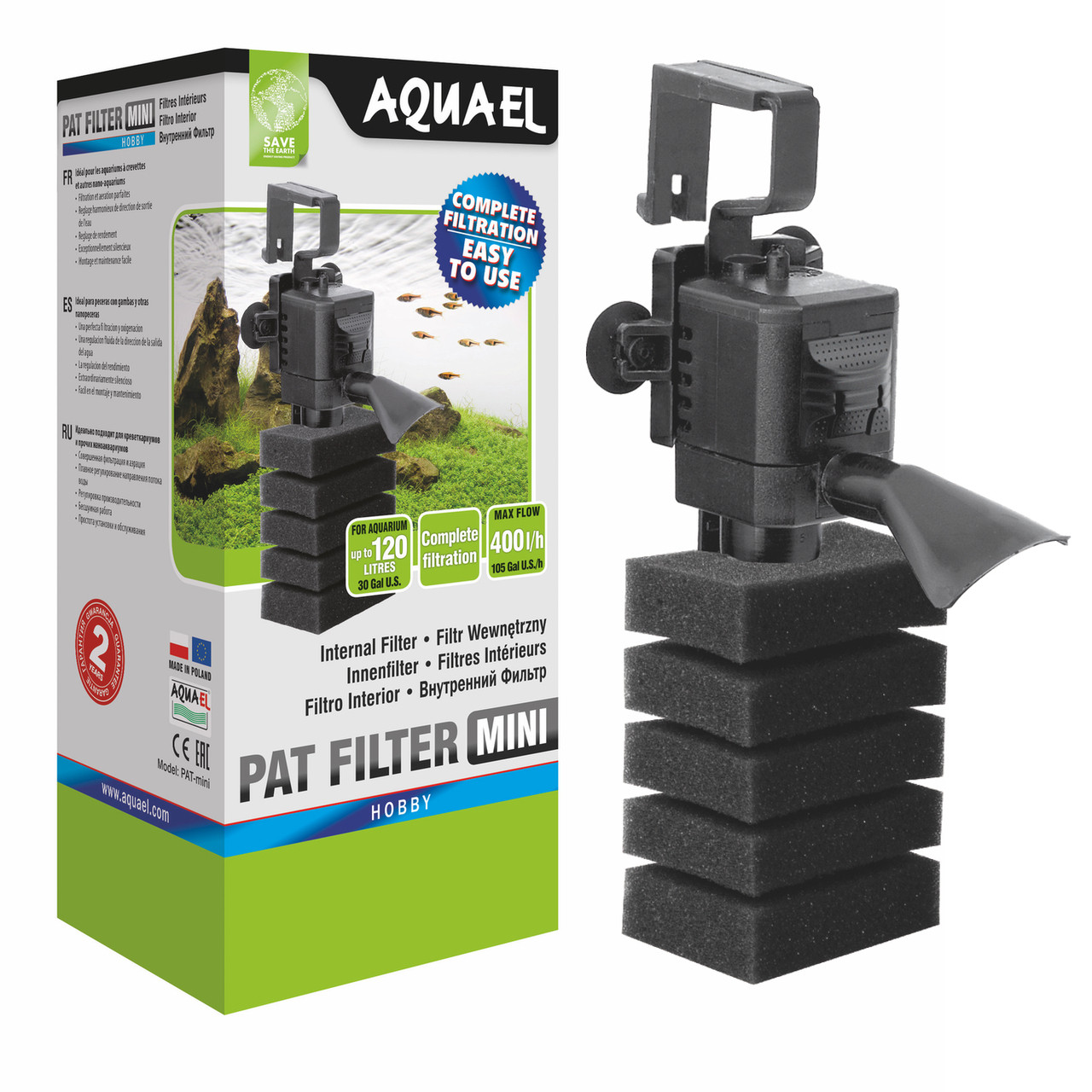Types of Aquarium Filters & What is Best For Your Tank
Posted by Artur Wlazlo on 20 Jan 2022
You want your aquarium to be healthy with clean water, the right temperature, and enough light for your plants and fish to thrive. At Modern Aquarium, we can help you with everything you need to create the best environment for all your tank inhabitants, and this includes filters. If you’re wondering about the best types of aquarium filters for you, check out this overview of your options from our experts.
Three Types of Fish Tank Filters
There are three types of processes aquarium filters employ to provide a safe and healthy environment for your fish and plants: biological, chemical, and mechanical. Each is important for a successful aquarium. Learn about how these filtration processes function here.
Biological Filtration
A biological filter uses a specific type of bacteria to break down ammonia in your tank water and transform it into nitrite and then to nitrate, which is less toxic and even beneficial serving as a source of food to some plants. In all tanks, regardless of their size, biological filtration is simply one component of a more extensive filtration process taking place in your aquarium. All types of aquarium filters provide biological filtration. Biological media can include sponges and other especially formulated media.
Chemical Filtration
Chemical filtration is another type of fish tank filter process used with the help of aquarium filters. It relies on the use of specially formulated chemical additives to dissolve and remove harmful waste from the water. The most popular chemical filter is either zeolite-based such as ZeoMAX Plus or activated charcoal because it’s relatively cheap, reliable and removes most of the harmful substances from the aquarium while being animal and plant-friendly.
Mechanical Filtration
Mechanical filtration is what most people think of when they hear about aquarium filters. This type of aquarium filter process involves physical removal of solid particles from your tank water. The filter pushes the aquarium water through the mechanical media, usually some sort of sponge or filter pad, which traps the free floating waste before it can settle in the bottom of your tank. A mechanical filter alone is not enough, as it does not actually remove or convert ammonia and nitrite in your water (see above). However, as you clean the dirty mechanical media ( sponges or filter pads), you remove the trapped waste and debris from the aquarium system, contributing greatly to the well-being of your entire aquarium system.
Filter Systems
Now that you know about the main types of filter functions, it’s time to talk about more specific filter systems. There are a variety of systems that could work for your tank, including:
1. Internal Box Filters: Also called corner filters, these types of aquarium filters are compact units that can be stuck to the glass inside your aquarium. They have a small footprint and these are great filters for smaller tanks, including hospital or breeding tanks.
2. Canister Filters: Pressurized canister filters that are great for tanks over 10 gallons. The canister is placed outside the tank and forces water through the filter media to deal with heavy loads. These are usually modular and can handle biological and chemical filter add-ons.
3. Diatom Filters: A diatomic filter is a specialized type of aquarium filter that removes minute particles from the water. They operate by pumping water through a layer of ultra-fine particles that scrub the water clean. Diatomic filters are ideal for temporary situations.
4. Fluidized Bed Filters: A more modern filter system, fluidized bed filters use sand or silica as a filter medium. Most units are not great for chemical filtration, but they offer powerful mechanical filtration.
5. Hang-on Power Filters: These filters are great for providing chemical, biological, and mechanical filtration. They’re super easy to install and maintain – even for beginners.
6. Sponge Filters: Used mostly for biological filtration, the sponge filter is usually “powered” by an air pump or powerhead to grow the bacteria that transforms ammonia and nitrite to less toxic nitrate. The sponge also provides mechanical filtration and must be periodically cleaned to keep them in optimum running condition.
7. Trickle Filters: By running the tank water over plastic balls or floss, this type of fish tank filter aerates the water as much as possible to grow large colonies of beneficial bacteria to break down waste.
8. Under Gravel Filters: An older form of filtration, under gravel filters use a plate filter under the substrate and an air pump that pulls the water down into it. Particulates and other contaminants all get sucked down and out of your tank. They offer biological filtration but no chemical filtration at all.
Do any of these types of aquarium filters sound like they’re the right fit for you? Check out our entire selection to find them!



